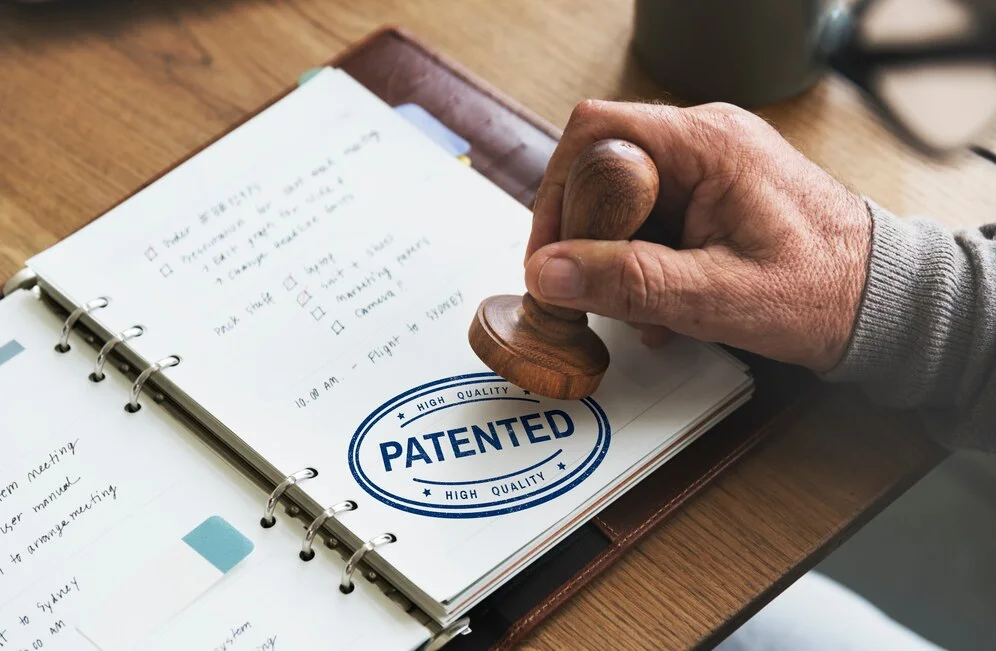Outline of the Article
- Introduction
- What is Invalidity Search?
- How it is different from Other Patent Searches?
- Exactly why is an invalidity search important?
- What are the strategies of performing Invalidity search?
- Conclusion
Introduction
Patent invalidation and patent validation are two similar searches, conducted for two different purposes. I will make it clear by providing you 2 examples:
- Imagine you had a brilliant idea/invention and you have secured that by obtaining a patent, now you want to keep that patent protected. But before you can do that, you need to make sure that no one else has already come up with the same idea. This is where an "VALIDITY SEARCH" comes in – it's like a detective mission to find any existing patents or information that might challenge your patent, which may have been missed by the Patent Office at the time of prosecution.
- Now, imagine you have a patent for a brilliant idea of yours and you find some other firm has patented an idea (or has applied for a patent) which is somewhat similar to your idea. Now you need to oppose that patent (the grant of that applied patent). This is where an “INVALIDITY SEARCH” comes in – it's like a detective mission to find any existing patents or information that might challenge the patent (application for grant of patent of your opponent) in front of the Patent Office.
We've some really smart ways to conduct these searches without breaking the bank. Utilizing our time and resources wisely is the key. I'm going to explain these techniques to you in this discussion. These strategies are all about making sure you're protected legally while also being mindful of your budget. So, let's dive in and uncover how to rock your patent journey without spending more than you need to. This article goes into great detail on patent invalidity searches, including what they are, how they work, strategies for getting the best search results, and more.
What is Invalidity Search?
An invalidity search is also referred to as an opposition or validity search. The search is conducted to determine the validity of one or more claims contained in Patent. In this search, prior arts that are similar or provide the similar idea which is protected by the claims are searched. The phrase "prior art" means information about a patent that has been made public in any language anywhere in the world before the filing date of the patent. The prior arts are not restricted to patents but non-patent materials including journals, books, encyclopedias, theses, product brochures, and standards. The prior art also comprises evidence of prior sales and pre-existing public awareness. It also includes public utilization.
To prove a Patent invalid various grounds are there, and some of these include:
- Lack of Novelty: The invention isn't new or groundbreaking.
- Lack of Creativity/ non-obviousness: The invention doesn't involve a significant leap from existing knowledge.
- Lack of Practical Use: The invention doesn't serve any practical purpose.
- Insufficient Explanation: The complete specification of the patent is not explaining the invention and way to reach the output of the invention clearly.
- Unsubstantiated Claims: The claims made in the patent aren't supported by what's described in the complete specification.
- Hiding information: The applicant has hidden necessary information from the patent office during the prosecution
While there are many legal bases for patent invalidation. As they focus on the perspective of existing knowledge. There are two primary reasons that stand out: novelty and inventive step. Only these two reasons are analysed at the time of invalidation search by a searching team.
Novelty is a core condition for obtaining a patent. It states that when a patent application is submitted, the invention must be brand-new and secret. To prove a patent invalid, based on lack of novelty, a careful evaluation of the invention's uniqueness is needed. It's crucial to identify the most relevant existing information that was accessible to the public at the time of the patent filing. Any pre-existing knowledge in the form of goods, patents, or scientific publications, that closely matches the claimed invention. It may have the potential to weaken its novelty and even invalidate it due to this lack of novelty.
The primary objective of the invalidity search typically revolves around assessing novelty. Beyond that, it goes into detail on finding references that might be combined. In order to show that the invention is either obvious or doesn't involve an inventive step. Effective invalidity searches take into account a variety of patent and non-patent literature. Which in combination contribute to the assessment of the novelty or lack of inventive steps of the invention.
How it is different from Other Patent Searches?
An invalidity search shares similarities with a patentability search. As they both seek out global prior art documents. The driving force behind this search is either the patent holder or a third party. It operates as a post-grant or post-examination exploration. That aims to uncover prior art that might have been missed by the examiner. A specific date range before the date of patent filing is applied during the search to pinpoint documents relevant to the granted claims’ priority.
The in-depth study of the patent's claims, descriptions, filing history, genealogy, prior litigation, and passage through the examination process. This feature distinguishes invalidity searches from other forms of patent searches in terms of known prior art. Unlike searches focusing on the general concept of an invention, invalidity searches put pressure on the language of the patent claims. Thus, a comprehensive understanding of claim interpretation and prior arguments is vital. For best results, a thorough analysis of both patent and non-patent literature is required.
Like invalidity searches, related searches also display subtle differences depending on the context. For instance, a freedom-to-operate (FTO) search closely resembles an invalidity search. This differs mainly in timing. As FTO searches are conducted before launching a new product in a jurisdiction, whereas invalidity searches are typically pre-issuance or post-issuance of a patent. In the FTO search the alive patents of only a jurisdiction or a certain jurisdiction in which the product is being launched is searched. Another comparison is between invalidity and state-of-the-art searches. A state-of-the-art search draws from publicly available information. It is conducted at the onset of the innovation process, covering a broad spectrum of subjects. An invalidity search narrows its focus solely to conditions. As that could either support or invalidate claims.
Exactly why is the invalidity search important?
The significance of the invalidity search lies in its role of verifying the accuracy of claims made within a patent. Whether to confirm or challenge those claims. There is not enough time to completely cover all aspects given that the patent application process normally takes 18 months. So, prioritizing efficiency becomes vital to minimize the potential for errors or reaching a dead end.
The primary reasons for conducting an invalidity/invalidity search encompass:
- Verifying Patent Validity: Assessing the legitimacy or invalidity of a patent's claims.
- Anticipating Claims: Identifying potential of the claims before initiating new enforcement actions.
- Clarifying Licensing Rights: Confirming the patent claims available to a specific licensor.
In the event that the claims are indeed valid. The initial step in addressing the situation involves examining prior art. If such evidence exists, it becomes enough support for managing the claim.
Different laws and regulations create the requirements for filing a lawsuit for patent infringement. As there are numerous patent-granting offices. The process of validating one's own patent or challenging another's claims can take on different forms. That are based on the legal frameworks of the corresponding jurisdiction.
All these tools are pivotal for innovators. Each complements the other to enhance the overall process. Using specialized patent software is strongly advised. As it ensures that no important details are missed. Since patent invalidity digs into complex technicalities where even the slightest things count.
What are the strategies of performing Invalidity search?
To find the priority date of the patent claims is the first step in starting a search for patent invalidity. Prior art is any knowledge that becomes publicly available before the filing date of a patent. Here, looking for the patent families and provisional application (if any) is important. The priority date of the patent will be the filing date of earliest application. For example, a patent application is filed in India on 1/1/2020 but it takes the priority from a PCT application which was filed on 1/1/2019. Then, the prior arts for the Indian patent application will be the prior arts published before 1/1/2019.
While not always guaranteed to provide plenty of material to scrutinize the validity of your patent. A patent validity search does offer insights into potential avenues to explore if any irregularities arise. The strategies to follow while conducting a search for patent invalidity are as below:
- Understand the subject matter: First and foremost, it is crucial to know both the technical and patent-related factors. It is very crucial to ensure that claims are properly interpreted during the validity search. The claims’ interpretation can be hampered due to the languages used in different-different jurisdictions. Given that validity searches usually revolve around granted patents. It is the comprehensive grasp of the claims that aids in locating pertinent extra references. The claim targeted for invalidation can be better understood by starting the search by digging into the prosecution history, including the file wrapper.
- Cast a Wide Search Net: In-depth invalidity searches yield insights crucial for informed business decisions. Overlooking relevant prior art might lead to substantial costs in patent infringement suits. Or they might need product revisions. It's essential to use all available resources and start a thorough search to prevent such situations. This involves exploring patent office search reports and prosecution history. This also includes opposition and litigation proceedings, among other sources.
- Pay Attention to Every Detail: Successful invalidity searches need close examination of several patents and literature documents. A comprehensive assessment encompasses the specification text, figures, chemical formulas, tables, and more. The search should have diverse aspects relevant to cover as many grounds as possible.
- Value Non-English Literature: Despite the fact that non-English literature is rather rare. Underestimating its importance would be a mistake while doing searches. Some non-English patent or non-patent document might be similar to the patent in question; hence a correct interpretation of non-English document is required.
- Recognize the Search Endpoint: Navigating the vast sea of information inherent in invalidity searches can be challenging. Knowing when to conclude the search is pivotal. In order to prevent resource depletion and unnecessary expenses. Setting clear parameters for search termination within your search strategies is crucial. The search termination is initialised by narrowing down the search using relevant key word, IPC/CPC classification, assignee-based search. The endpoint is considered when while using all the strategies you have found substantial proofs for validating/ invalidating the patent in question.
- Present Reports Effectively: The ultimate report should be presented in a clear and comprehensible manner. Although it may be tempting to provide a complete list of sources, not all of them may be relevant to the client's situation. Give a brief summary of the findings and, if necessary, add more information to support it. Give the mapping of the findings with the patent in question. Deliver the findings in an objective manner and refrain from injecting personal opinions. As they could potentially be used against your client.
The in-depth final report should include all the crucial details such as search methods, keywords, and IPC/ CPC classifications. It should also include significant individuals, primary inventors, and claim diagrams that link important prior art to claim qualities. Such a thorough analysis makes it easier to determine with accuracy whether a patent claim is valid or invalid.
Conclusion
In conclusion, it is a task to conduct the patent invalidity searches. A thorough understanding of the technical details and the patent landscape is required. These searches provide priceless insights that can inform strategic business decisions through a careful claim interpretation, a careful attention to detail, and a thorough examination of prior arts. It is necessary to know when to stop a search that promotes resource efficiency. Even while the volume of information available poses challenges. The link between complex research and useful outcomes is formed by writing clear, short reports and effective presentation. The style of presenting the search outcome free of personal opinions. But the strategies explained above are crucial to be followed. Then only you will be able to carry out accurate patent invalidity searches. That clearly shows whether patent claims are valid or invalid.
.jpg)





